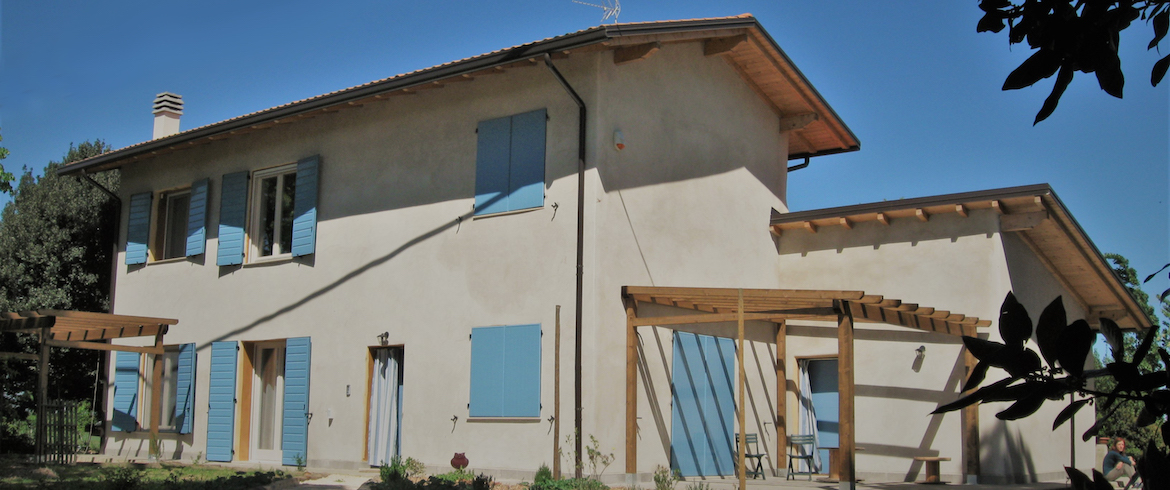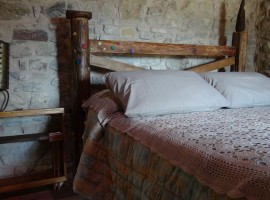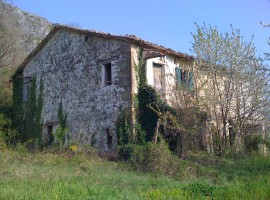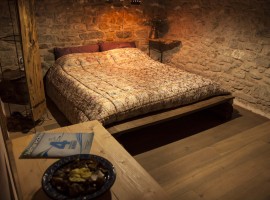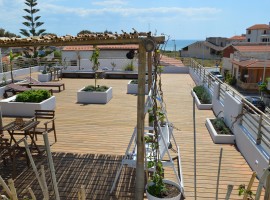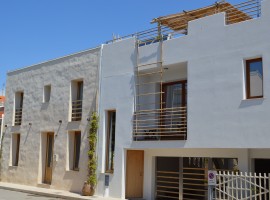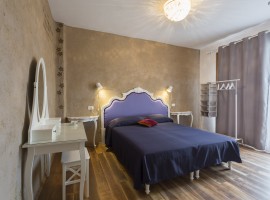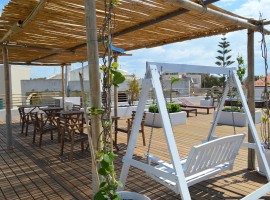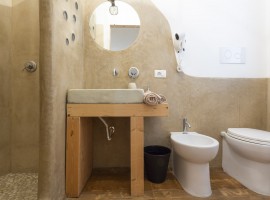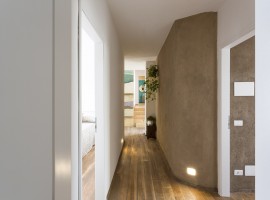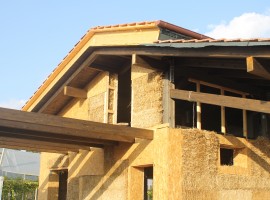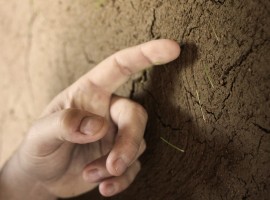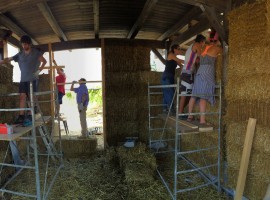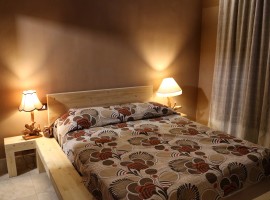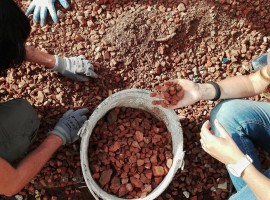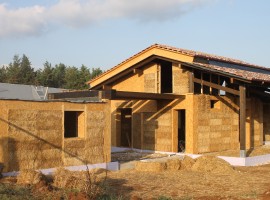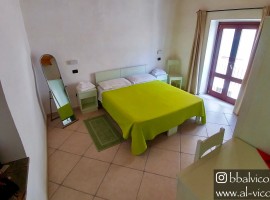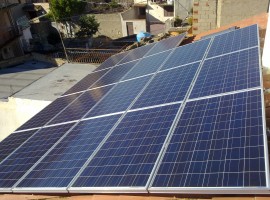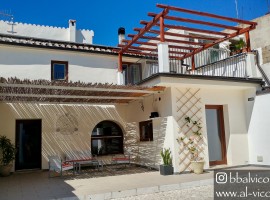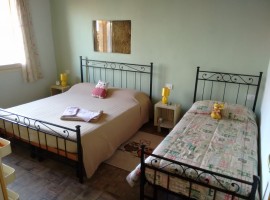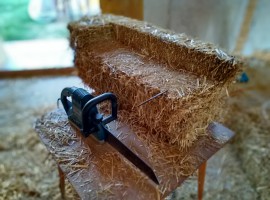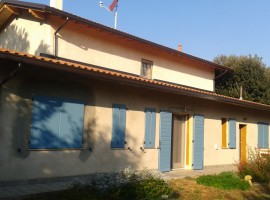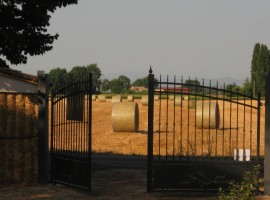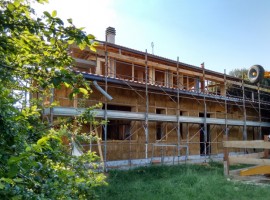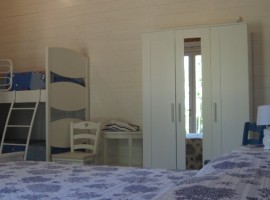Have you ever wanted to have a straw house? Let’s discover together everything you need to know about this exceptional material and the experience of who decided to use it for their own home and B&B.
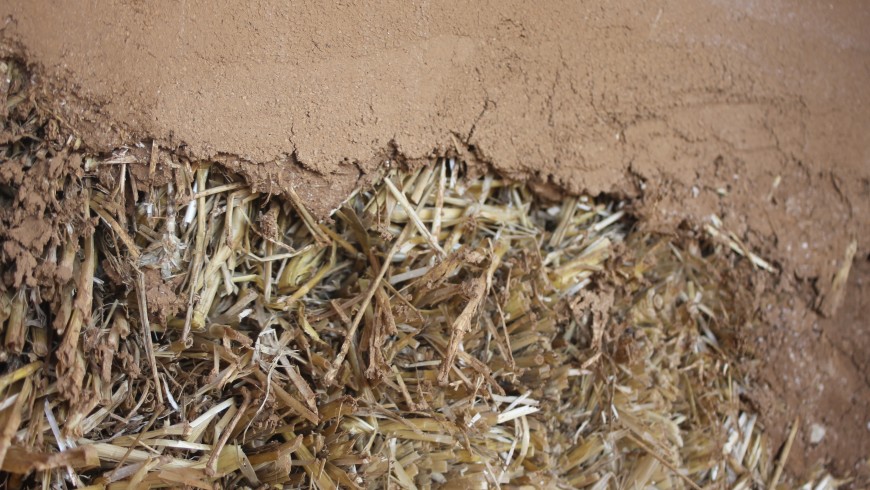
Building practices and energy consumption in our homes account for nearly half of all greenhouse gas emissions in the atmosphere. It is therefore crucial to change our way of building, finding techniques that are more sustainable. Perhaps the best material is the straw.
The advantages of this incredible material are numerous, ranging from saving to safety. In Italy, there are still few who have decided to build a straw house, but they are more and more. Some not only have chosen to live in a straw home but have decided to share their home with travelers by opening up an eco-sustainable B&B. We talked to them, to understand what it means to live or take a vacation in a straw house.
Holidays in a straw house in Emilia Romagna
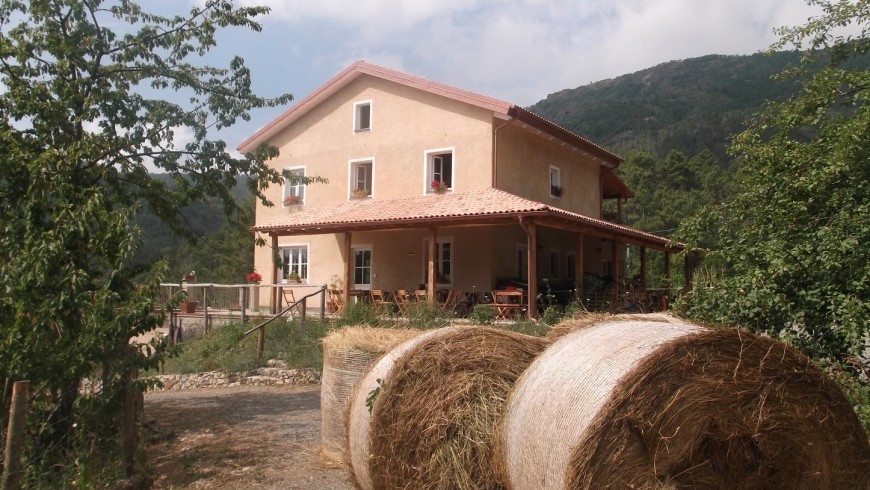
B&B SassoErminia is nestled in the hills of Valmarecchia. A portion of the farmhouse was rebuilt with a wood and straw bales. We talked to Andrea, who told us the story of his home. Everything begins after the encounter with architect Giovanni Sasso, who published a book about straw houses. Andrea and his wife Patrizia’s dream was to live on the hill, creating not just a home but a place of relationships and hospitality. Here, they retrieve an ancient farmhouse in the hills: they decide to keep the old part with the stone walls and use a simple and eco-friendly material for the walls to be rebuilt. They learn to do so by taking part in several workshops, then organizing them in Sasso Erminia. The supporting structure is made of wood. Among the uprights and the supporting beams, straw ballets have been inserted, for a total of about 250 bales along all the walls and roof, guaranteeing thermal insulation and breathability. The wood and straw walls were plastered with raw earth. It was the end of 2011, and in some respects, building with straw was still very new and little known. Andrea and Patrizia then experimented, make researches, made some small mistakes but managed to achieve their goal: to reduce their ecological footprint, creating a healthy, clean and balanced place. That’s what Andrea told us when we asked him if his guests appreciate the peculiarity of the house:
«The thing that surprises us is that whoever comes here reads something of us and knows us before they arrive. Our guests are almost always sensitive to environmental issues. Even those who happen here by chance, when we tell the story of the straw house, is curious and emotional. In the breakfast room there is a small window that allows you to open the wall and see the straw bales that make up the wall. Guests are pleasantly impressed by the fact that in the house the temperature is perfect even without heating or conditioning. The space smells of nature, and threes no smell of paint or chemicals. They appreciate the salinity of the air and the low humidity.»
Holidays in a straw house in Sicily
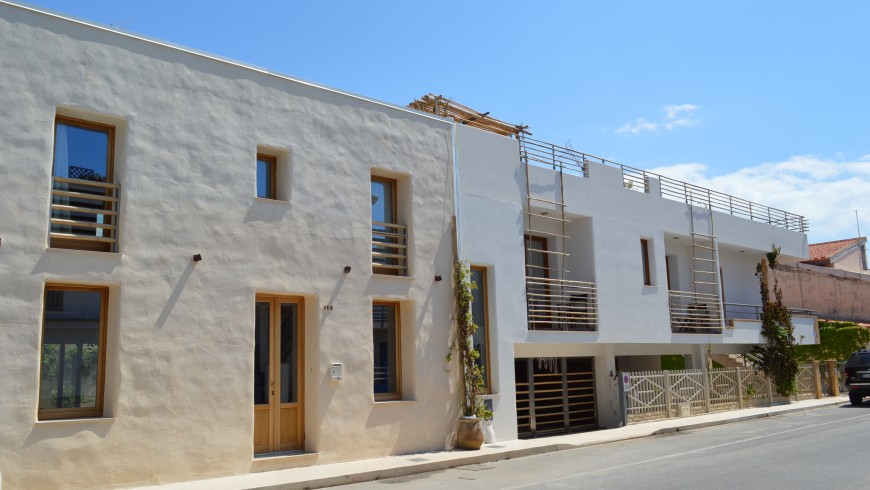
In the province of Ragusa, Licia is waiting for us, the owner of SempreVerde, an ecological house on the beaches of Montalbano. Here’s what she told us:
«My case, the story of my project, begins in Venice. I studied there at the Art Academy when talking about Permaculture for the first time. By attending the 72-hour course, I learn about straw house participating in the construction. On that occasion I even figured out what was like to live in a room of the previously built straw house.
At the end of the academy I knew the topic I want to talk about in the thesis, “SempreVerde: a house from plant to plant” was born.
First, the home had to have the least environmental impact possible and for this reason we spent a lot of time looking for the materials. We also had to choose which methodology to build the expansion.
It was clear that this home, open to the public as B&B, also had a another purpose, a strategy to make this particular technique known to those who did not know the existence and make it touch those who knew it only in theory.
For the construction I supported a local firm “OLIVO” who knew the matter and wanted to try. We needed a structuralist for the wooden part, a designer for the vision and a job director. The project’s energetic part also had its studies and its engineers.
We asked LA BOA (the first straw houses in Italy) to oversee the project and always with them we activated the workshops to which they participated in many, curious to understand how straw could build solid walls.
In the construction of the straw part worked a lot of people, even volunteers and some of the process was also done by us buyers. Self-construction helped save us much because the technique needs a lot of workload while the materials are local.
Difficulties…?
… it was all difficult! But I think even building a “normal” home is not a piece of cake.
Maybe it was a bit more special, a bit more problematic, but the team was strong and together we managed to overcome all the difficulties.
A straw house has a lot of advantages. It offers the best insulation you may want. Already tested for cold climates, in Punta Secca we are testing it against the damp and wet heat of Low Sicily. Until now I have managed not to install the air conditioners, but the building is at its first month of life, we still have to face the heat of August. In my room I do not want to put any, but I do not know how many guests will accept my stubbornness and how much would prefer to have a remote control to set the preferred artificial temperature.
Certainly it is a breathable structure and one of the benefits is the impossibility of condensation and therefore mold. These walls do not retain moisture but are crossed, keeping it always constant and always on an optimal standard. In my room I placed a hygrometer with which I am happy to find that humidity never rises above 60%.
We want to add that straw is a scrap of the food chain so we do not use energy for its production, on the contrary we sometimes waste it to dispose of it. By using straw bales as bricks, CO2 production is avoided, which is the cause of serious environmental damage and is largely produced by the building industry.
I have tried in all ways to remain as integralist as possible in the straw home, avoiding any deviation from the eco-friendly materials argument, while I was remiss in the restructuring from which a kind of hybrid came out. The bathrooms in tadelakt, the wooden floor, some rough ground plaster, in addition to the italian bamboo railings. In the straw home, however, I can really say that the only materials that we used are straw, earth, lime and wood.
The story to tell the truth is even more intricate because in the middle there is a love romance with the owner of the business that has accomplished the jobs that now for two years now is my partner…
Today, every time I go around the house, I’m surprised at the result. Obviously the house has been finished following my taste, but I have to say, I really like it and even the guests always compliment me. There are those who come here knowing already or even coming up for the straw issue, there are those who were not aware and fall in love with the matter coming here. Until now, one month after the opening, no guest left us with negative opinions. Everyone is happy and shares their experience with their loved ones. And that’s exactly what I hoped would happen.»
Casa Mattia, a straw house in Lazio
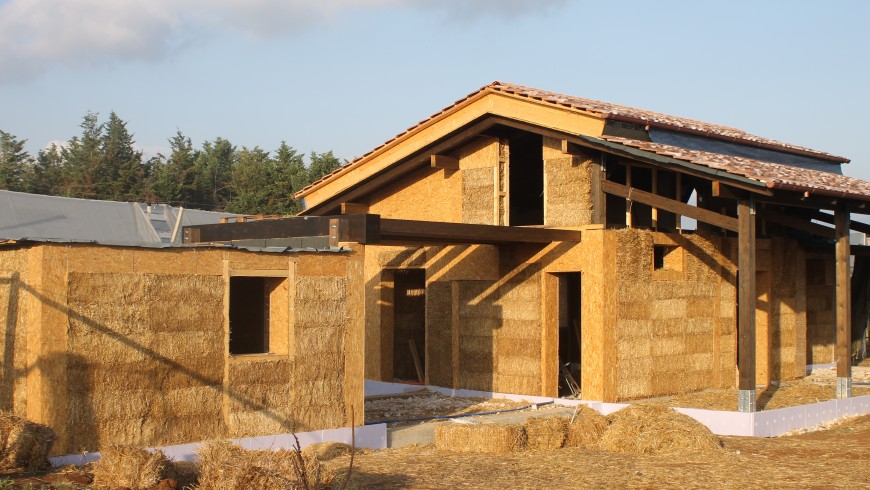
Opened few months ago, B&B Casa Mattia is located in Cisterna di Latina. Rama Energy, a photovoltaic company, has decided to start the “straw buildings” project two years ago, entering in the green building sector. The idea is of the engineer Marco Mazzoli, who has learned about straw houses about 3 years ago abroad, a wonderful material that has no transport costs, is a byproduct of agriculture. Starting from straw, the team of Rama Energy has developed a complete local construction method.
The supporting structure is in wood with pressed ballet. The walls are plastered with ground plaster and the dyes are eco-friendly. The choice of these materials has given the walls maximum breathability, the building absorbs excessive vapors for unmatched wellness.
Part of the property also has a garden roof which also has a thermal and aesthetic function. The entire structure is connected to a home automation system that connects all devices to the building system.
Thanks to the high thermal insulation, the B & B does not need a high production/heating/cooling output. In addition, the installation of the photovoltaic system has contributed to further reducing house management costs.
The bale of straw thanks to the pressing contains a low oxygen content inside it and therefore it is resistant to fire more than the buildings built in reinforced concrete.
The acoustic wellness, which is almost never taken into consideration for traditionally built buildings, is just one of the exclusive features of the straw house.
Last but not least, the design and finish are no less precious: the frescoes are customized, the tadelakt is used for the plaster and the furniture is creative.
Rama Energy has chosen to involve local artisans and to organize open workshops for anyone interested in learning techniques such as the construction of straw ballets and the production and laying of raw plaster molds. The difficulties encountered by the company were mostly bureaucratic and administrative.
A straw house is anti-sismic and, unlike what one might think, is also fireproof. Straw is fuel, but the absence of oxygen makes them flameproof. Indeed, from tests carried out abroad, the fire resistance of these walls is 90, which is higher than that of cement, which is 60. Marco reminds us that Europe has been asking for years to build buildings with a minor environmental impact. Straw construction allows us to respect and reuse, to make true sustainable business and development.
An ancient straw house in Sardinia
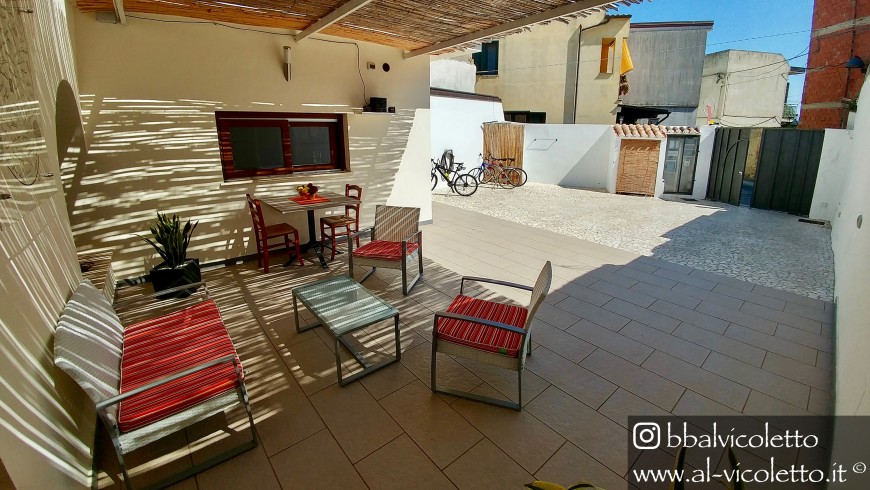
Maurizio did not realize the house where he lives and where he welcomes his guests. He has chosen his home from the houses of the village where he was born, but the choice of using straw has been the one of who has actually built it. The exact date is unknown, but it was in cadastral maps already in the 1920, but is probably older.
It was made with a base of granite stone up to a height of 1.5 mt and then the supporting walls are instead in straw and mud, an ancient material with exceptional properties. Maurizio has refurbished the house using new 100% natural plasters, allowing wall and stone to breathe, thus ensuring the health of the home.
A wonderful straw house 20 minutes from Ravenna
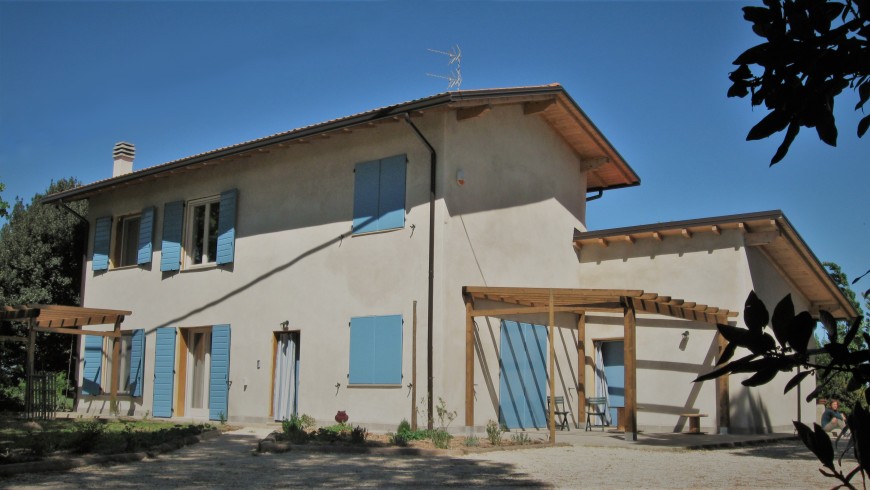
Stefano discovered the possibility of making straw houses following a basic permaculture course, attended at Bagno di Romagna’s self-sufficient farm.
The house of B&B Al Gufo Saggio is supported by a wooden structure with lamellar wood and solid wood and the walls were instead made with classic straw bales.
“In order to realize the walls we have also organized courses attended by many young groups who are eager to learn the technique: they were intense and joyful days.” – Stefano told me – “Straw is a material that actually aggregates and creates opportunities for exchange and help that are very enriching. Several of the participants are now building their own straw house!”
The roof has also been isolated with straw, improving even more the insulation of the house, which keeps the temperature unchanged on both floors of the house.
Guests arriving at the B&B often do not know the possibility to build houses with straw and are pleasantly impressed by the coolness of the rooms in summer and winter warmth as well as lack of moisture and a straw scent.
Sleeping in a straw home is a experience that everyone should live as well as the best way to understand the benefits of these sustainable constructions.
You might also like:
Feng-shui, the laws of harmony even on holiday
Present and future of sustainable tourism (and some experiences to live to find out what it is)
